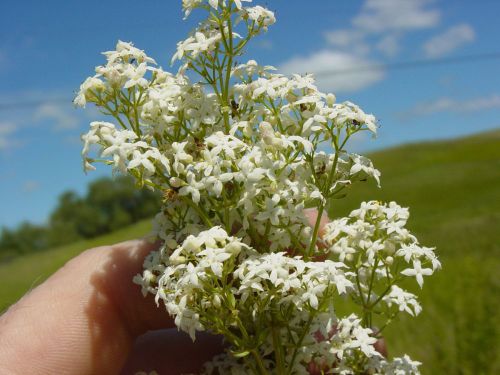Bloomin’ Blues: Bedstraws at home in northeast Oregon
Published 2:57 pm Friday, July 19, 2013

- <p>Galium boreale</p>
Name: Northern Bedstraw
Scientific name: Galium boreale
Trending
There are at least 66 species of bedstraw in the western half of North America, and 9 of them are in northeast Oregon. The articles this week and next will focus on two of our most common species. All species of bedstraw have their leaves in whorls of 3 or more around each node of the stem, and all of them have square stems. Both features are unusual, and in our area the only plants with both features on the same plant are bedstraw.
The name boreale refers to being a circumboreal plant, found all the way around the northern hemisphere. This is true of both this species and the one for next weeks article.
Most but not all of the species have a third unusual feature. They may have stiffly hooked or downward-angled tiny hairs which cause the plant to stick to your clothing, hair or skin as you walk by. This feature also occurs on the fruit of other plants as well, on cockle-burs for example. It is said this occurrence in nature was the source of the idea for modern Velcro.
The name bedstraw comes from its common use for centuries in Europe to stuff mattresses, and by 19th century settlers here. The stems would stay stiff and resist matting together, while dried stems have a pleasant sweet odor. Common names include beggar-lice, chicken-weed, cleavers, Robin-run-ahead, clabber-grass, bird-lime, burhead, cheese-rennet-herb, gosling-weed, grip, grip-grass, stickleback, sweethearts, sticky-willy, and more. Much folklore refers to various bedstraw species, and many of the common names came from England and Scotland. One species was believed to be used to line the manger in Bethlehem. The sweet odor of the dried plants comes from coumarin, which is used in modern medicine to prevent blood from clotting and also in rat poison.
Northern Bedstraw is an erect perennial reaching 2-3 feet high. The leaves are in whorls of 4 at each node, up to 3 inches long, and are narrow and tapered to the tip. The stems and leaves are generally smooth and hairless but sometimes have rough short hairs. The flowers are tiny with 4 white petals, but often are in large, crowded, showy clusters. The erect stems with long narrow leaves in whorls of four help to distinguish it from other species.
Where to find: This species should be in full bloom now at middle elevations or higher, in open forested areas.
Trending
-Bruce Barnes









